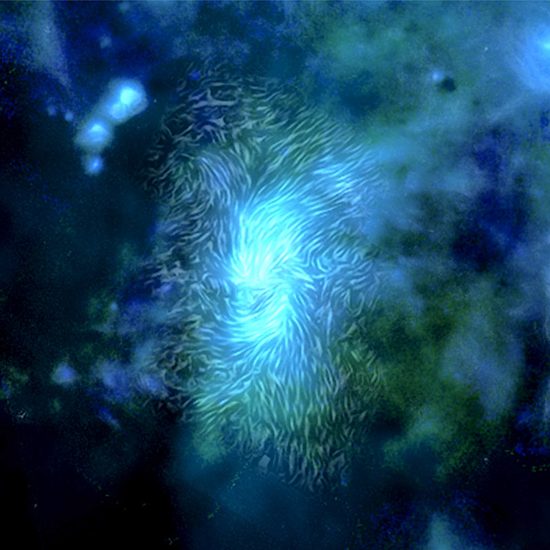
June 8, 2020
What generates galactic magnetic fields? What gives them shape and strength?
Astrophysicists landed on an assumption that they think answers those basic questions. “Cool gas” falling into galaxies, supernovae explosions, star birth, and rotational energy are what they believe create the fields. However, several factors are missing in their equations, since their models are not able to predict the fields observed in several spiral galaxies.
Since electromagnetic fields are stronger than gravity by many orders of magnitude, ignoring electricity as a formative agent is not only negligent, it creates false trails.
In the presence of a magnetic field, elements produce spectral lines that split and occupy different positions. Those changes in position are called the Zeeman effect. It is not surprising that the magnetic field contours surrounding galaxies remain unexplained in consensus viewpoints. In the theoretical pool of knowledge from which they draw, there are no electrical entities to provide a source for that magnetism.
Instead, “star formation reducing turbulent energy” (cool gas) is put forth as a de rigeur theory — no electric fields, and no motor-generator effects are included in their calculations. Magnetic fields in space can be detected more easily than electric currents, so modern astronomers think that the fields are “primordial” fragments left over from the Big Bang.
According to a recent press release, astronomers studying the center of the Milky Way created a more detailed map of the galaxy’s magnetic fields using the SOFIA instrument. Joan Schmelz, director at the Universities Space Research Association, in Columbia, MD, and SOFIA senior science advisor, wrote:
“There are still aspects of our galaxy’s black hole that we can’t explain with gravity alone. Magnetic fields may be able to help solve these mysteries.”
The fact that moving charges constitute an electric current that can generate magnetic fields has been known since the days of Michael Faraday. That current is wrapped in a magnetic field. When more charged particles accelerate in the same direction, the field gets stronger. That is a familiar idea to electrical engineers, but when astronomers find moving charges in space they are mystified and refer to them as “winds,” or “shock waves.”
Astronomers maintain that galaxies are clouds of hydrogen gas and intergalactic dust that were assembled by gravity until they coalesced into glowing thermonuclear fires. The conventional community also proposes that most galaxies contain black holes of unbelievable magnitude. It is those “gravitational point sources” that are said to cause galaxies to spin, jets of gamma and X-rays that span thousands of light-years to appear, and “radio lobes” larger than the parent galaxy to form.
Something not considered when researchers attempt to explain structure in the Universe is that for charged particles to move, they must move in a circuit. Energetic events cannot be explained by local conditions, alone, the entire circuit must be considered. For that reason, while the consensus worldview sees isolated “islands” in space, Electric Universe theory emphasizes connectivity with a network of “transmission lines” known as Birkeland currents.
Primal electrical energy is orders of magnitude more powerful than gravity. Birkeland currents attract one another over distance in a one over the square root of r relationship, so Birkeland currents are the most powerful long-range attractors in the Universe. Electric charges flowing through dusty plasma sustain the magnetic fields detected in stars and galaxies.
Stephen Smith
The Thunderbolts Picture of the Day is generously supported by the Mainwaring Archive Foundation.












